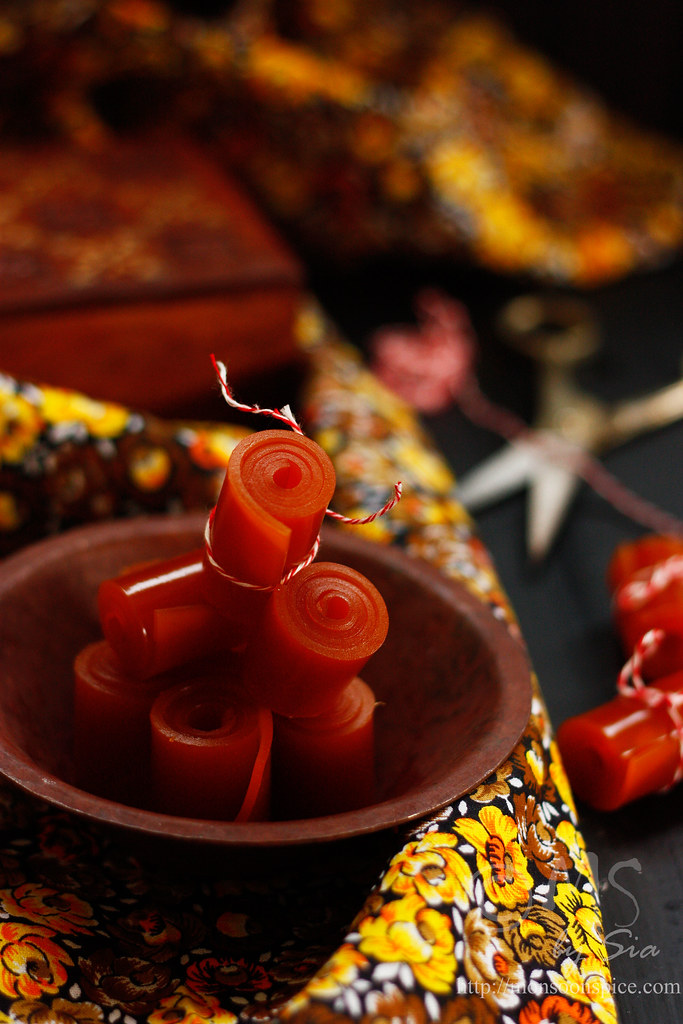
Learn ho to make Aam Papad ~ Mango Fruit Leather recipe two ways
Last few days have been absolutely crazy with festive school performances, school trips to the local church, volunteering, Christmas shopping, signing hundreds of cards, product and recipe testing in the kitchen and a mountain high load of never ending things! I am not exaggerating! If that was not enough to bring the whole house down, I have LD hanging upside down holding on to my apron strings moaning he is bored every 5 minutes. Bored 5 years old?! Like, seriously?!!! I can’t wait for the school to reopen in a fortnight! Just kidding. :)


We are off to meet our friends up north in Yorkshire for the Christmas and then travelling to London for the New Year. There will be a lot of partying, eating, cooking, shopping and activities planned for the week long fun filled holiday season. I have been busy sorting out the presents, packing our bags, going through the truck load of laundry, ironing never ending pile of cloths, dusting and cleaning every nook and cranny, answering to dozens of emails, running around the energetic 5 year old, and god knows what else! In between the entire hullabaloo, I decided to make some edible presents for friends! I tried to find the reason and completely failed to answer why I am doing this!!! Call me crazy, but the perfectionist and the ever lurking OCD in me makes me go an extra mile to make everything perfect for my loved ones.
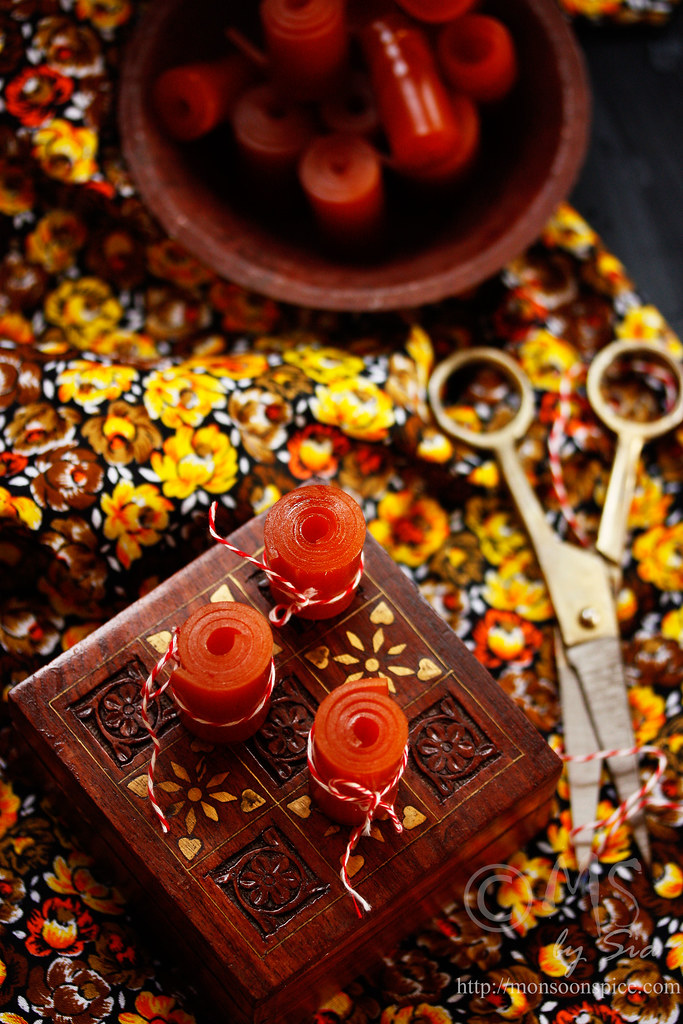


This season I decided to keep it simple and make
Aam Papad or
Mango Fruit Leather for the holiday edible gifts. Traditionally it is made during the
mango season in peak summer months when the sun is literally at his scorching best. Also traditionally the
wild mangoes are used as they have distinctive sweet taste laced with tart flavour making it one of the most satisfying and delightable treats for the rest of the years when mango season is long gone. The juice is extracted by squishing the mangoes to get the last drop of the heavenly golden nectar without adding any water to preserve the true taste of summer.
The juice is then poured thinly on a large steel plate or tray or in the olden days, on a straw mats specially designed to make papad and fruit leathers. It is then kept in an open space where there is plenty of direct sunlight. As soon as the first layer sets and dries completely, another layer of mango extract is poured on top and let it sundry and this is repeated for couple of days until about a cm thick layer of Aam Papad is formed. The technique of sun dried fruit leather is an age old Indian cooking method applied for making papad, sandige (sundried fritters), fruit leather and sundried fruits and vegetables to preserve them for the winter months. The age old sundried technique of preserving the food helps in keeping the food fresh for months without the need of any preservatives or refrigerating.
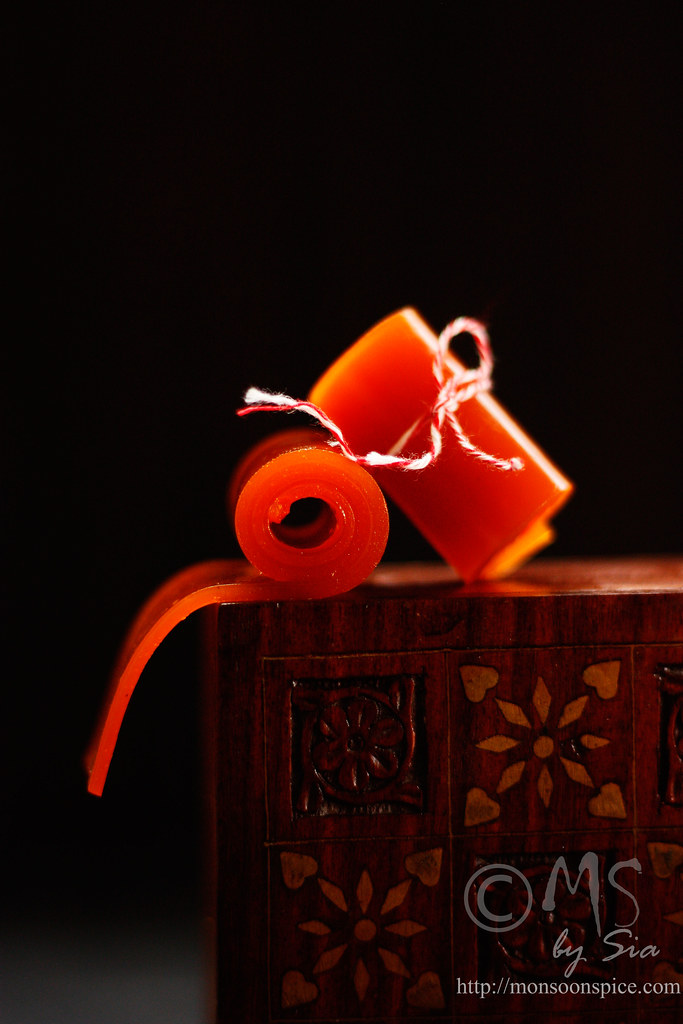
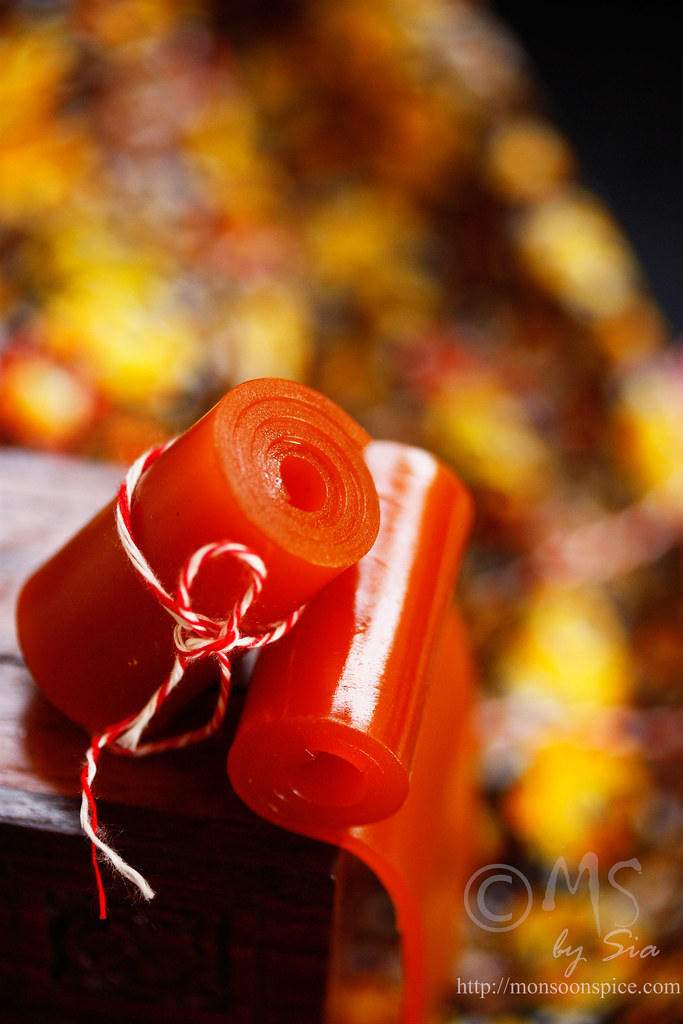
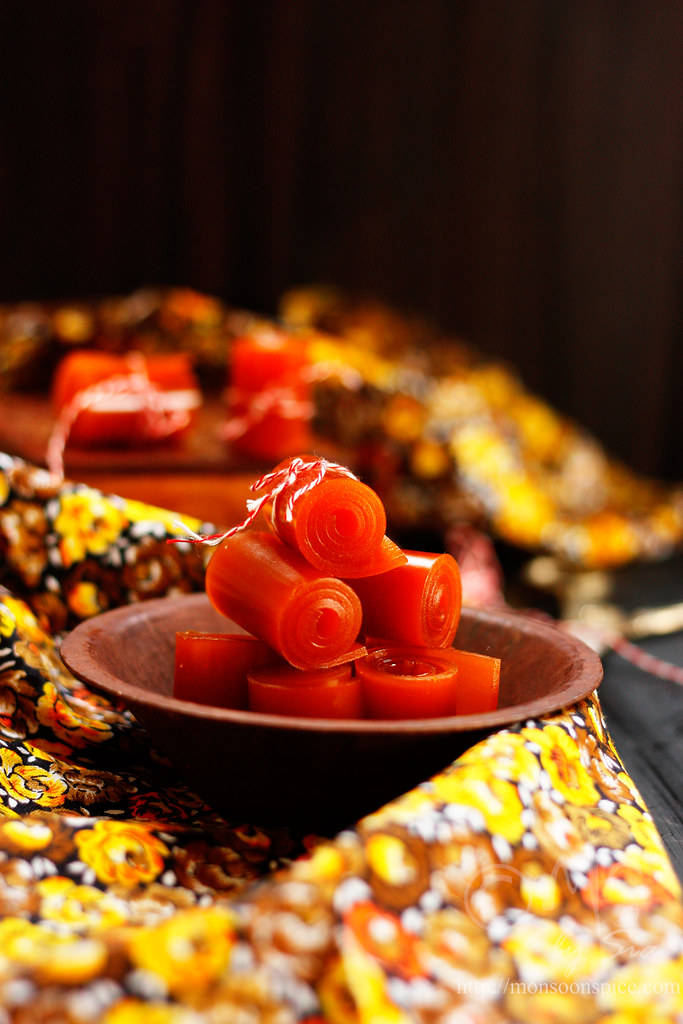
There is a shortcut method for making the Aam Papad or Mango Fruit Leather in the oven. The fruit extract is poured thinly in an oven proof dish or try and cooked in a low temperature for an hour or two until the layer is set. I will be sharing the two techniques of making the Aam Papad, the traditional sun drying technique and the oven cooking method. I usually follow the sun drying method during summer when there is plenty of sun for long hours. It can take anywhere between a day or two to set a thin layer of Aam Papad or Mango Fruit Leather depending on the available sun here in Britain. The second oven cooking technique is for the remaining 300+ sun-less days! Although the sundried Aam Papad can be stored in an air tight container in a room temperature for up to a year, the oven cooked one should be consumed with in few months. Apart from this, the taste, flavour and the aroma of the Aam Papad or Mango Fruit Leather is same when made following any technique.
It is not only gluten free and vegan friendly, but also with no added preservatives, fat, or sugar, this
Aam Papad or
Mango Fruit Leather is really healthy after school snack alternative and also is a wonderful homemade edible gift option for the festive season. You can make this using either the fresh mango extract or simply use the canned mango pulp which is available in almost all the Indian grocery shops. I find the Kesar Mango the next best as we don’t get the
wild mangoes in our neck of woods. You can also use Alfonso or any other sweet mangoes with little sour taste and with good amount of pulp to work with. With just one ingredient, this is probably the most simple and easy recipe to follow and also the tastiest snack to munch on. This
Mango Fruit Leather is soft, chewy, and simply wonderful. It’s easy to make, needs just one ingredient, far healthier and tastier than its processed counter parts, and feels like a burst of fruity sunshine. A perfect homemade edible gift for Christmas or year round! So without further ado, let us make some delicious
Aam Papad or
Mango Fruit Leather to savour the flavour of summer!
And before I go, merry Christmas and a very happy New Year to you and yours! Have a wonderful holidays...

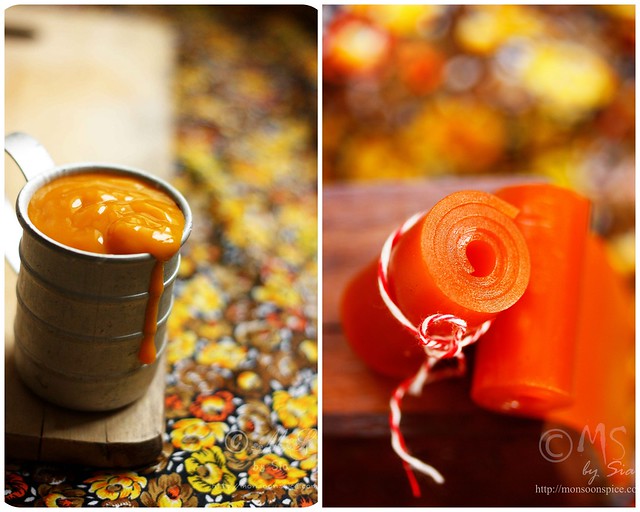
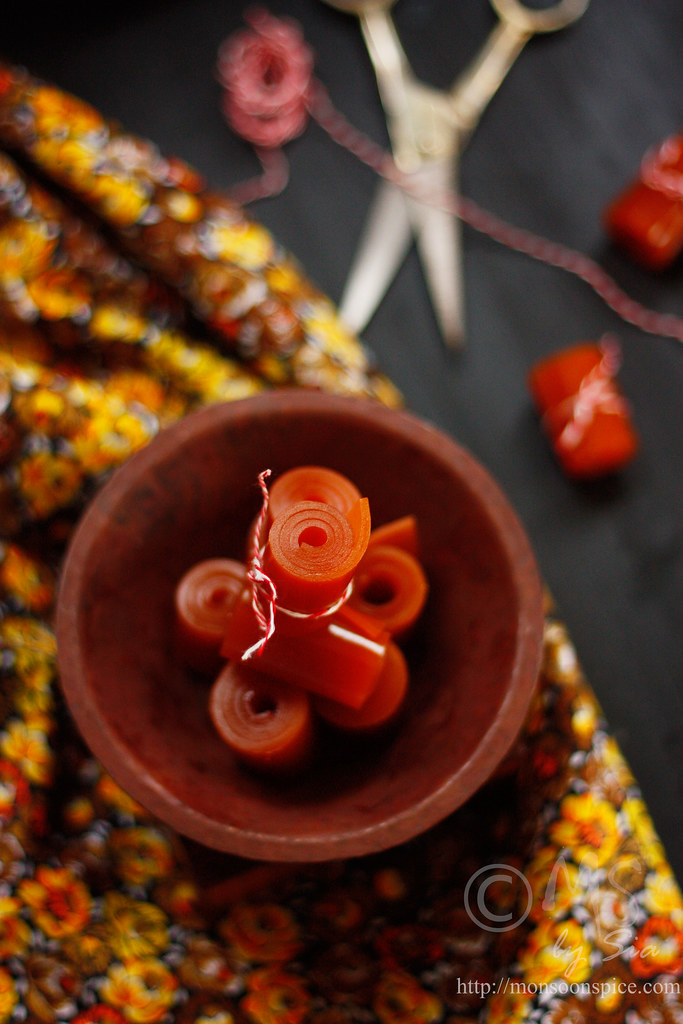
Aam Papad (Mango fruit leather two ways)
Prep Time: 5-10 mins
Cooking Time: 2-3 days when sun dried or 1½ - 2 hours in an oven
Recipe Level: Easy/Beginner
Spice Level: N/A
Makes: About 12-15 rolls
Shelf Life: Up to a year when sundried and 1-2 months when cooked in an oven when stored in an air tight jar at room temperature
Serving Suggestion: As snack
Ingredients:
1½ - 2 cups Mango Puree, fresh or canned
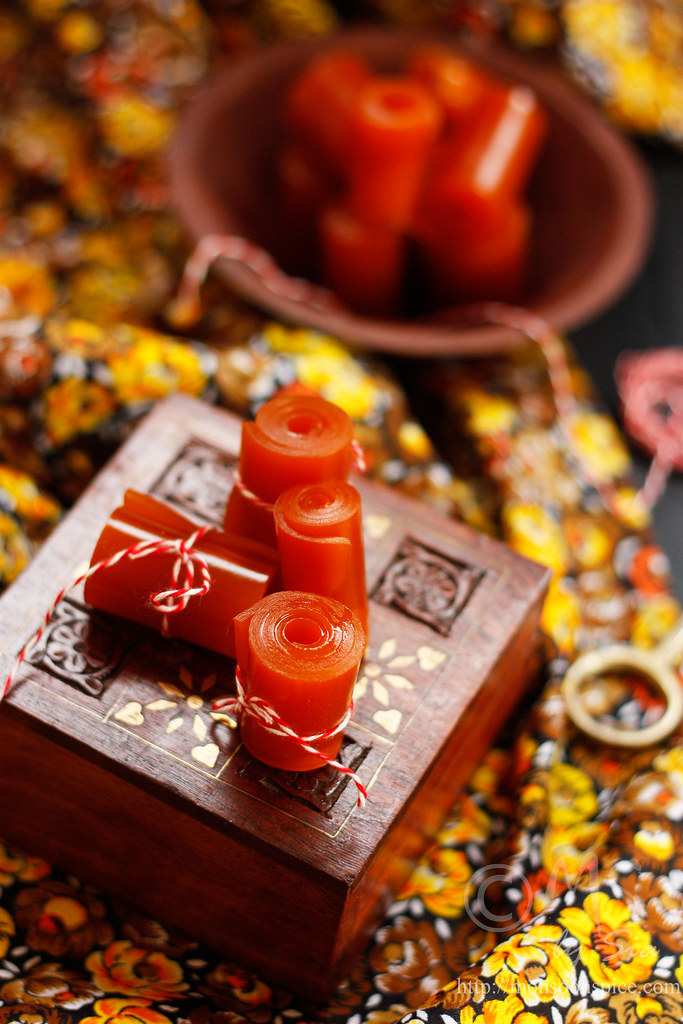
 Method:
Sun dried method:
Method:
Sun dried method:
- Pour mango puree onto a large steel plate or tray or baking sheet. With a help of a spatula, spread purée on a steel plate/tray or baking sheet to 1/8 inch thickness. It may not extend all the way to edges, but make sure to spread as flat and as evenly as possible. Please do make sure that no part of tray or baking sheet is visible beneath purée.
- Place the tray in an open space in the direct sunlight. Let it sundry for a day or two until the layer no longer sticks to your finger when pressed and is firmly set. Depending on the available sunlight, it may take 1-3 days for the layer to set.
- You can add another cup of mango puree once the first layer has set firmly and let it sun dry for another 1-3 days and repeat the method 3-5 times to make thick layered Aam Papad.
- Once set, run the knife through the set fruit leather to cut it into 1½ to 2 inch long stripes. Roll the stripes and store them in an air tight container. They are ready to eat immediately or can be stored for up to a year at room temperature.
Oven cooking method:
- Preheat the oven to 110 deg C and place the rack in the center of oven. Line a large rimmed baking tray or sheet with a parchment paper.
- Pour mango puree onto a large steel plate or tray or baking sheet. With a help of a spatula, spread purée on a steel plate/tray or baking sheet to 1/8 inch thickness. It may not extend all the way to edges, but make sure to spread as flat and as evenly as possible. Please do make sure that no part of tray or baking sheet is visible beneath purée. If the puree is spread too thinly, it will cook quickly and harden to crisp in oven.
- Let it cook for 1½ to 2 hours or until the fruit leather no longer feels sticky to touch and sets well. The baking time will vary from one oven to another based on the thickness of the puree, oven temperature and humidity. So keep a close watch after 1¼ hours and check every 15 minutes after that.
- Remove the Aam Papad or Mango Fruit Leather from oven and remove it from the baking sheet along with the parchment paper. Let it cool completely before running the knife through the set fruit leather to cut it into 1½ to 2 inch long stripes. Roll the stripes and store them in an air tight container. They are ready to eat immediately or can be stored for 1-2 months at room temperature.
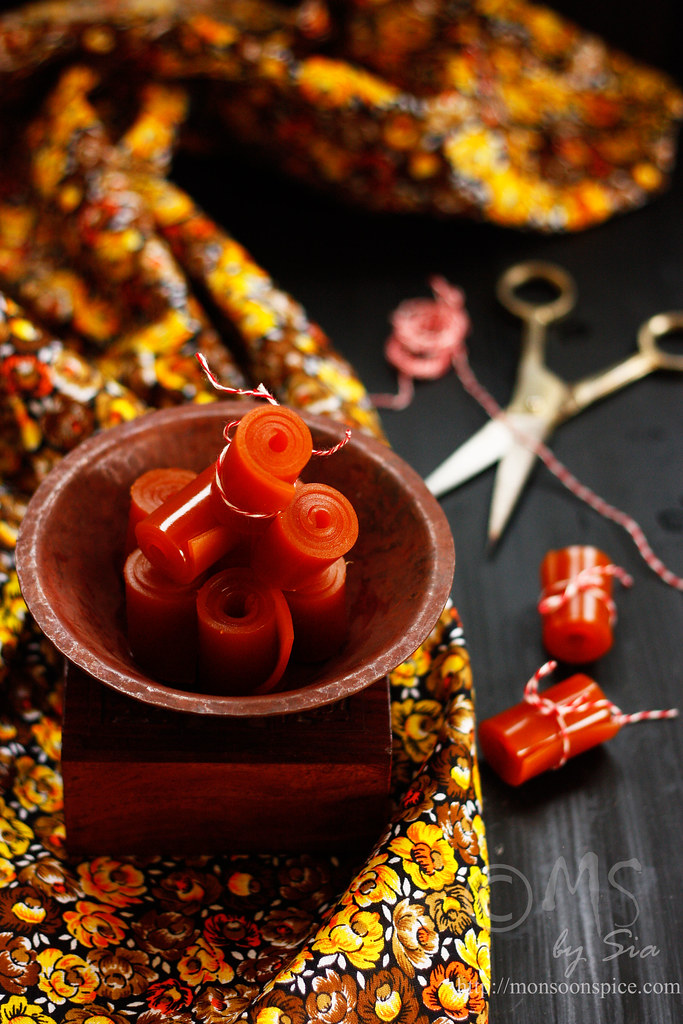
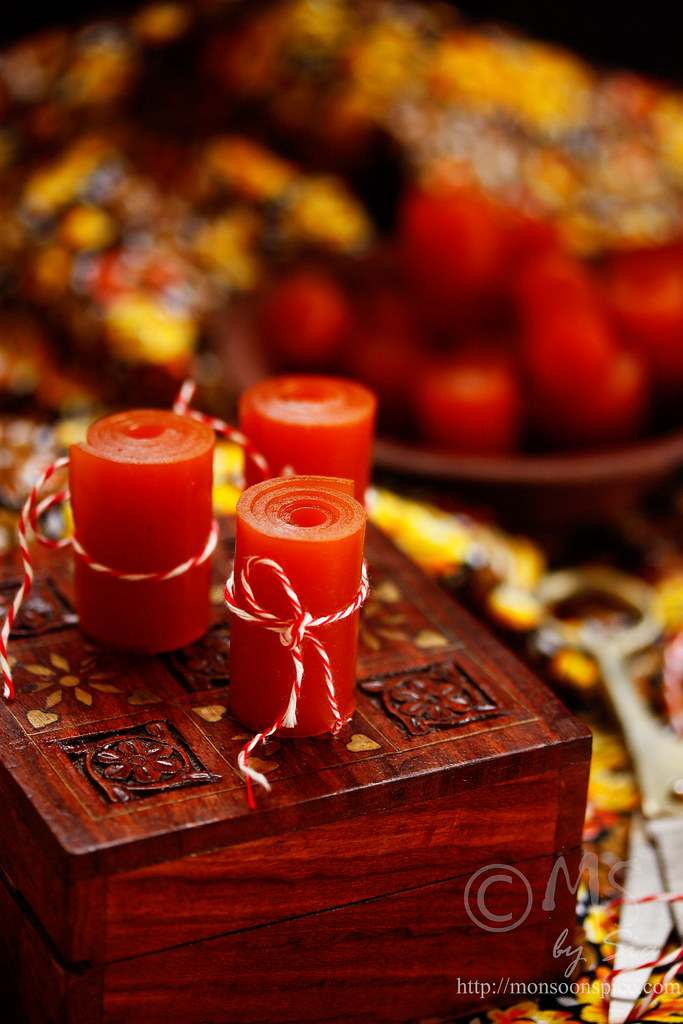
Sia’s Notes:
- You can make this using either the fresh mango extract or simply use the canned mango pulp which is available in almost all the Indian grocery shops.
- I find the Kesar Mango the next best as we don’t get the wild mangoes in our neck of woods.You can also use Alfonso or any other sweet mangoes with little sour taste and with good amount of pulp to work with.
- You can add about 1-2 tbsp of freshly squeezed lime juice if you find the mango puree to be extremely sweet. The lime juice will balance the sweetness of mangoes and give it a touch of tartness.
- Although the sundried Aam Papad can be stored in an air tight container in a room temperature for up to a year, the oven cooked one should be consumed with in few months.

















A heavenly treat! Wonderfully fruity and so addictive.
ReplyDeleteHappy Holidays!
Cheers,
Rosa
Thank you, Rosa! Happy holidays to you too :)
DeleteWill they set without added sugar
Delete